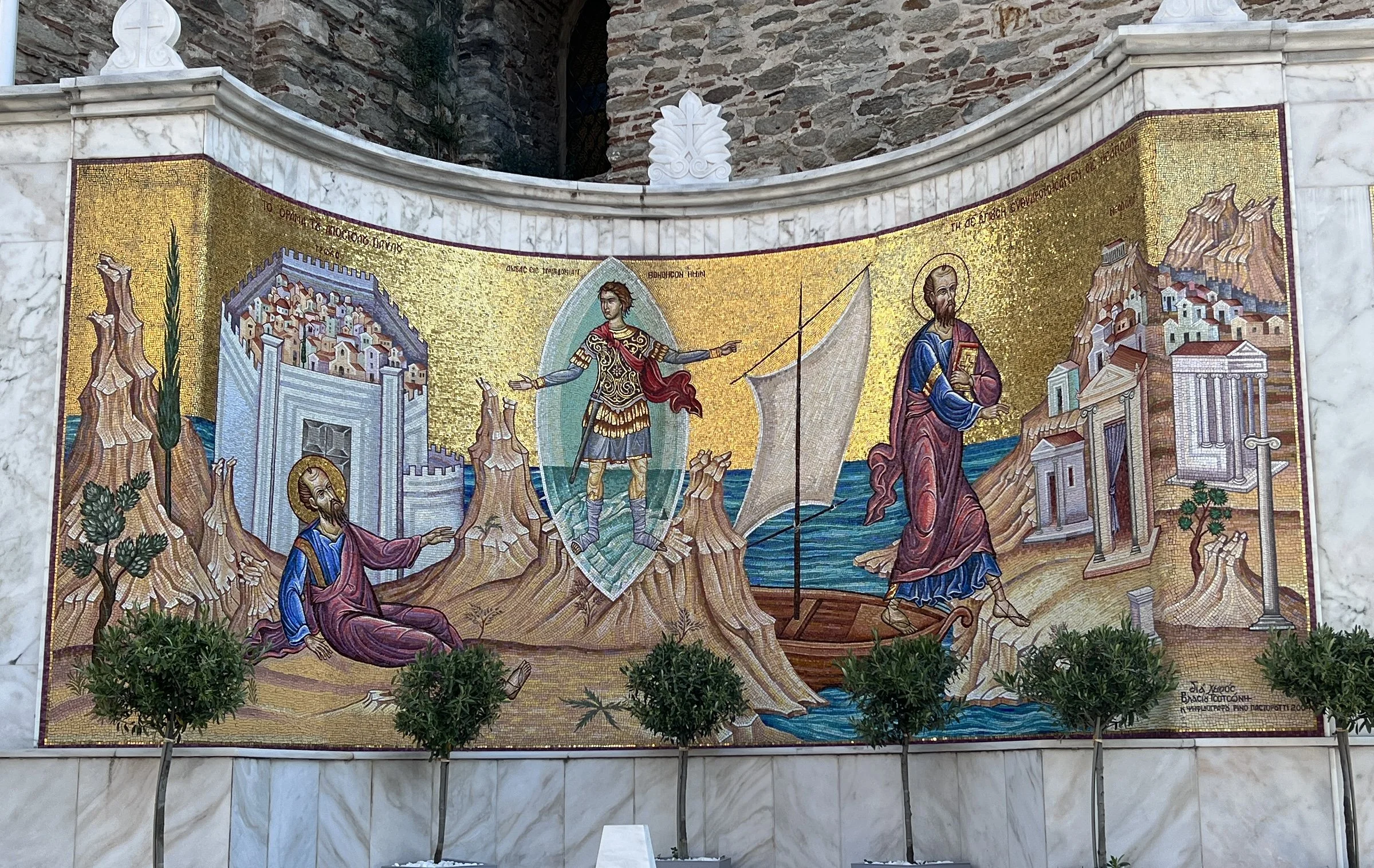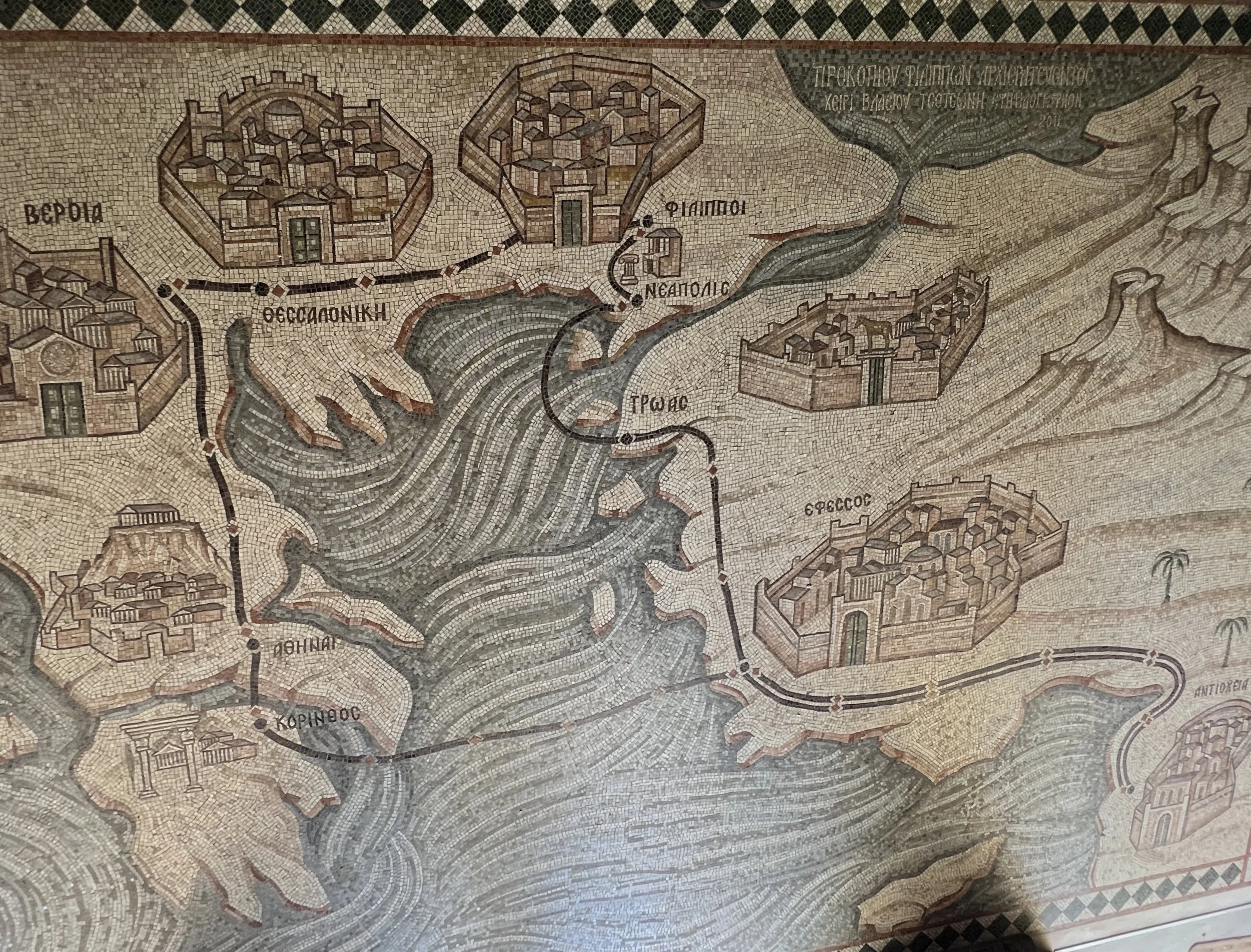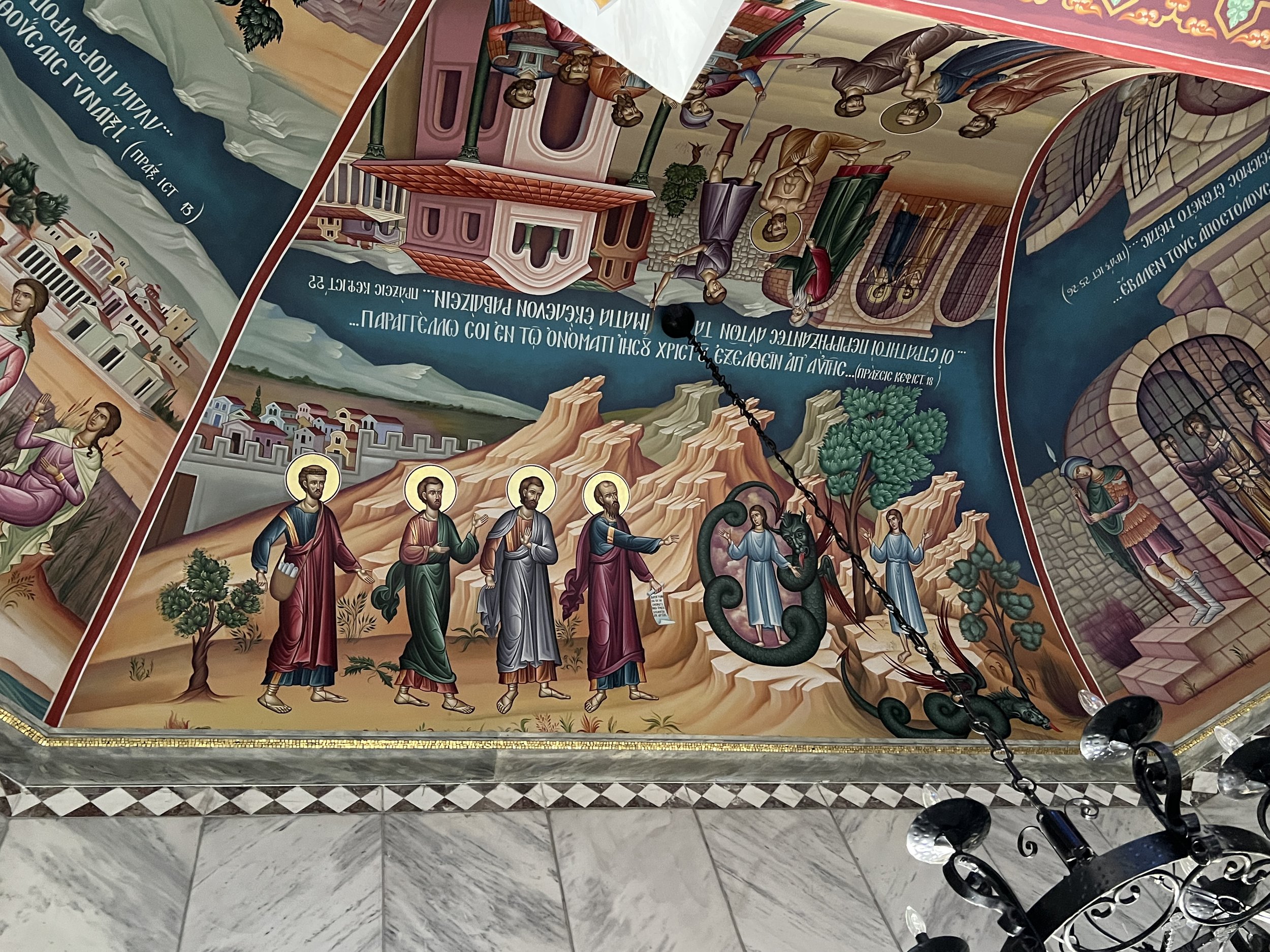Philippi Greece
“So, setting sail from Troas, we made a direct voyage to Samothrace, and the following day to Neapolis, and from there to Philippi, which is a leading city of the district of Macedonia and a Roman colony. We remained in this cit some days. And on the Sabbath day we went outside the gate to the riverside, where we supposed there was a place of prayer, and we sat down and spoke to the women who had come together. One who heard us was a woman named Lydia…” Acts 16: 11-14
The archeological site of Philippi Greece in the time of Paul was a Roman city where Octavian (Caesar Augustus) settled Roman soldiers in 42 BC after the battle of Philippi. Prior to this, it was ruled by Macedonia and named after Philip II (father of Alexander the Great). There is a plain west of Philippi that was the site of the Battle of Actium where Octavian and Mark Antony defeated Brutus and Cassius in 31 BC.
The apostle Paul had a vision while in Alexandria Troas during his second missionary journey. The vision guided Paul and his companions to sail for Macedonia in approximately 49 - 50 AD. Philippi could be considered the site of the founding of the first Christian community in Europe.
Modern day Kavala, Greece is the biblical port of Neapolis. The city has several memorials to the beginning of Paul’s journey in Greece and mosaics of his vision. Heading north out of Kavala there are stretches of the Via Egnatia visible and walkable - the route that Paul no doubt took from the port to Philippi. The Via Egnatia extends into Philippi and through the forum.
The archeological site has remains of at least 5 important Christian basilicas, including a very early 4th century AD basilica. The forum area is Roman and from an era later than Paul, but it is built over the earlier forum. There are shops visible along the road at the south end of the agora. The city walls and gates and parts of the theater would have been standing during Paul’s visit. Sometime during the 1st or 2nd century AD the theater was expanded by the Romans.
The area thought of as “Paul’s Prison” is not certain to be that. It clearly was a cistern at one point. There are later Christian frescos. This area also contained some Hellenistic shrines and religious structures (an argument against it as a prison)… but during our visit in 2022 the area was roped off because of a human remains recently found and being excavated, which is an argument for it as a prison at some point in time
The Octagon Basilica (4th century AD), built over an earlier chapel, has a dedicatory mosaic inscription to Paul. Nearby are the remains of a 4 room baptistry and fountain. North of this area is a bath complex dated to 1st century BC.
Near Philippi, on the Zygaktis River, is the Baptistery of St Lydia. It is a modern memorial to St Lydia and her baptism. Sarcophagi and grave stones have been found in the area. Roman paving has been found - likely a part of the Via Egnatia. The memorial is a peaceful site with steps into and out of the stream built in the shape of a cross. Mosaics in the memorial building tell the story of Paul’s vision, meeting the women praying near the water, Lydia’s baptism, Paul’s imprisonment and the conversion of the guard.
Depiction of Paul’s vision leading him to Macedonia



































